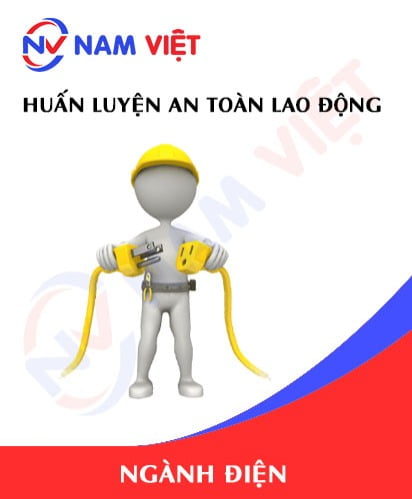Occupational Safety Training for Operating a Sanding Machine
99,000 ₫
Lưu ý: Giá trên đây được tính cho một người, giá có thể biến động tùy vào số lượng học viên tham gia khóa học và tùy vào vận động của thị trường, để được hỗ trợ chính xác hơn về giá xin tham khảo bảng báo giá hoặc liên hệ trực tiếp với nhân viên tư vấn của chúng tôi.
An toàn lao động là một vấn đề quan trọng khi vận hành máy chà nhám và cần được giải quyết kịp thời để đảm bảo cho sức khỏe và sự an toàn của người lao động và nâng cao uy tín cho các doanh nghiệp tại đây. Khóa Huấn luyện an toàn lao động là một trong những giải pháp hiệu quả nâng cao nhận thức về cách phòng chống tai nạn lao động cho người lao động khi vận hành máy chà nhám.
Table of Contents
Toggle1. Overview of Sanding Machines
a. What is a sanding machine?
A sanding machine is an industrial or household device used to sand the surface of materials such as wood, metal, plastic, or ceramics. The main purpose of a sanding machine is to remove uneven surfaces, cracks, or discoloration, making the material smoother and more even.
Sanding machines come in various types and sizes, including belt sanders, disc sanders, bench sanders, and handheld sanders. Each type is designed for specific tasks and material types. Some sanding machines can be used to remove old paint or surface stains on wood before repainting, while others are used to smooth metal surfaces or in woodworking and furniture production to achieve a fine and polished surface.
Sanding machines save time and effort compared to manual sanding and ensure a more uniform and smooth surface.

b. How sanding machines work
The operation of a sanding machine depends on the specific type of machine, but fundamentally, it uses one or more sanding discs or belts to make the material surface smoother by removing uneven layers, dust, and cracks. Here are the main working principles:
- Sanding disc or belt: The machine uses sanding discs or belts embedded with abrasive grains to grind the material surface. The size and coarseness of the grains vary depending on the sanding task.
- Motor: The machine is equipped with a motor to rotate the sanding disc or belt, creating the grinding force that sands the material surface.
- Pressure and speed: The operator controls the pressure and speed of the sanding machine. Pressure applied to the surface affects sanding depth, while motor speed can be adjusted to control sanding rate.
- Machine type: Depending on the type of sander, the working principle may vary. For example, a belt sander uses a continuously moving belt, while a disc sander uses a rotating disc.
- Result: When in operation, the sanding machine removes uneven materials, leaving a smoother and more uniform surface, ready for further processes such as painting or finishing.

c. Industries using sanding machines
Sanding machines are used across various industries to process and smooth material surfaces. Key industries include:
- Woodworking and furniture: Sanding machines smooth and prepare surfaces of wood products such as cabinets, tables, chairs, and flooring, ensuring a fine finish before painting or finishing.
- Metalworking: Metal sanders remove burrs, dust, and uneven material on metal surfaces, preparing them for further processing and finishing.
- Construction: Used to sand and smooth surfaces of building materials like concrete, bricks, wood, and metal to meet aesthetic and quality standards.
- Automotive: Sanding machines smooth and prepare car parts before painting or finishing, ensuring surface quality and appearance standards.
- Ceramics production: Used to smooth ceramic surfaces before firing.
- Plastic products: Sanding machines can smooth plastic components and products before finishing.
2. Overview of Occupational Safety Training for Sanding Machine Operation
a. What is occupational safety training?
- Occupational safety training for sanding machine operation equips workers with awareness and methods to prevent workplace accidents. Workers directly operating sanding machines belong to Group 3.
- This training helps workers recognize hazards and reduce the risks of workplace accidents.
REGISTER FOR OCCUPATIONAL SAFETY TRAINING SERVICE
b. Training duration
Initial occupational safety training:
- Total training duration is at least 24 hours, including testing.
- 8 hours of theory on safety and hygiene policies and laws
- 8 hours of theory on basic occupational safety and hygiene knowledge
- 4 hours of theory on specialized training content
- 2 hours of practical training on specialized content
- 2 hours of final theory exam
The training center schedules sessions depending on worker availability, typically in 6 sessions over 3 days if continuous learning is possible.
Periodic occupational safety training:
- Before the occupational safety card expires, workers must attend periodic occupational safety training lasting at least 50% of the initial training time.
Explanation: Periodic occupational safety training lasts at least 12 hours, including testing. Upon successful completion, workers are reissued an updated safety card.
c. Training content
| No. | TRAINING CONTENT | TRAINING DURATION (HOURS) | |||
| Total | Including | ||||
| Theory | Practice | Test | |||
| I | Safety policies and occupational hygiene laws | 8 | 8 | 0 | 0 |
| 1 | Overview of legal documents on occupational safety and hygiene. | 6 | 6 | ||
| 2 | Standards and technical regulations on occupational safety and hygiene. | 1 | 1 | ||
| 3 | Specific regulations from authorities on safety and hygiene for construction, production, storage, and inspection of machinery, equipment, materials, and hazardous substances. | 1 | 1 | ||
| II | Basic occupational safety knowledge | 8 | 8 | 0 | 0 |
| 1 | Basic knowledge of workplace hazards. | 4 | 4 | ||
| 2 | Methods to improve working conditions. | 1 | 1 | ||
| 3 | Safety culture in production and business. | 1 | 1 | ||
| 4 | Rights and responsibilities of employers and workers; safety policies and network roles of safety officers. | 1 | 1 | ||
| 5 | Safety rules, signage, use of protective equipment, first aid, and occupational disease prevention. | 1 | 1 | ||
| III | Specialized training content | 6 | 4 | 2 | 0 |
| Comprehensive knowledge of machines, hazardous substances, risk analysis, safe working procedures, and handling hazardous materials. | 6 | 4 | 2 | ||
| IV | Final safety training exam | 2 | 2 | 0 | 0 |
| Total | 24 | 22 | 2 | ||
See more training content for all 6 groups
d. Occupational safety card
After completing the safety training and passing the test, workers are issued an occupational safety card (commonly called Group 3 safety certificate).
The card shows personal information such as name, date of birth, job, and workplace, along with training duration, official stamp, and signature confirming completion.
According to Clause 2, Article 24, Decree 44/2016/ND-CP, there are 2 cases:
- If the employer and worker have an employment contract, the employer must sign and stamp the card after the worker completes training and passes the test.
- If the worker is freelance or seasonal, without a contract, the training unit must sign and stamp the card after completion and passing the test.

3. Hazards When Operating a Sanding Machine
Operating a sanding machine can involve several hazards, and users must follow safety measures to ensure their own safety and that of those around them. Below are some common hazards when operating a sanding machine:
- Physical injuries: Sanding machines generate powerful abrasive forces, and if not carefully controlled, they can cause physical injuries to the user. Risks include injury to the eyes, hands, fingers, or other body parts.
- Dust and particles: The sanding process produces dust and particles, which can harm the user’s health. Fine dust can cause respiratory health problems, such as abrasive pneumonitis.
- Electric shock: When sanding metal, there is a risk of electric shock. If users do not ensure electrical safety, electrical accidents may occur.
- Slipping or losing control: When operating a sanding machine, the user must be careful and maintain control. Otherwise, the machine may slip or lose control, causing injuries or damage to materials and the environment.
- Working in hazardous environments: In some industries, sanding machines may be used in hazardous environments, such as with flammable or toxic liquids. In such cases, users must follow specific safety rules and use appropriate protective equipment.

4. Accident Prevention Measures When Operating a Sanding Machine
To control and reduce the risk of accidents when operating a sanding machine, a range of safety measures must be implemented. Below are important accident control measures when working with a sanding machine:
- Training: Ensure that all sanding machine operators are trained to use the machine safely. They need to know how to operate the machine, read and understand the user manual, and be aware of potential hazards.
- Use personal protective equipment (PPE): Ensure that operators are fully equipped with PPE, including safety glasses, masks, gloves, helmets, and protective clothing if necessary.
- Check the machine before use: Before starting work, inspect the sanding machine to ensure it operates properly and has no technical issues. Make sure electrical cords, sanding belts, discs, and other accessories are secure and not damaged or torn.
- Use the sanding machine correctly: Always follow the manufacturer’s instructions and specific guidelines for the type of sanding machine being used.
- Control pressure and speed: Ensure the machine’s pressure and speed are appropriate for the material being worked on. Excessive pressure or speed can increase the risk of injury or damage to materials.
- Maintain a safe distance: Keep a safe distance between the operator and the sanding machine to avoid injury during operation.
- Manage dust and particles: Use a dust extraction system or vacuum to remove dust and particles from the workspace to protect the user’s health.
- Periodic inspection and maintenance: Conduct regular inspection and maintenance of the sanding machine to ensure it operates safely and reliably.
- Understand potential hazards: Operators must recognize and understand potential hazards when working with sanding machines and take actions to reduce them.
- Use additional safety devices: Use extra safety equipment such as safety guards, additional handles, and machine-holding devices to ensure safe operation.
- Periodic inspection of sanding machines to detect safety issues such as wear, mechanical faults, or defects early, thereby reducing the risk of workplace accidents.
5. Benefits of Occupational Safety Training
An Toàn Nam Việt provides your business with the following benefits after completing occupational safety training courses in accordance with Decree 44/2016/ND-CP regarding Occupational Health and Safety for companies and enterprises.
- Employees can recognize potential occupational hazards and take preventive measures to avoid workplace accidents.
- Your business can establish risk prevention measures in production, operation, and maintenance processes.
- Minimize costs associated with safety risks in the workplace.
- Continuous production without interruptions increases labor productivity and product quality.
- Ensure compliance with occupational safety laws and reduce legal risks.
- Build credibility and professionalism, enhancing the company’s brand image.
Nam Việt’s training courses are solutions to prevent external hazards, helping individuals avoid dangers that could result in injuries or, in severe cases, death.
REGISTER FOR OCCUPATIONAL SAFETY TRAINING
6. Customer Feedback After Completing Training
An Toàn Nam Việt has years of experience supporting many businesses across Vietnam, especially in the southern provinces. This responsibility is extremely valuable, and thus our Occupational Safety Training is increasingly professional. Our growth has been driven by positive feedback and constructive suggestions from our partners. Below are some testimonials from clients we have served.
See more customer interviews after using our services at An Toàn Nam Việt
7. Occupational Safety Training Capability of An Toàn Nam Việt
An Toàn Nam Việt is a reputable and quality occupational safety training center in Vietnam. Our safety training courses are continuously held at production workshops, factories, and construction sites across all 63 provinces.
REGISTER FOR OCCUPATIONAL SAFETY TRAINING
Occupational Safety Training License
- An Toàn Nam Việt has been inspected and certified by the Department of Safety, Ministry of Labor – Invalids and Social Affairs for occupational safety training, reinforcing our training capabilities.

Training Materials and Lectures
- Before being used in safety training courses, materials are reviewed to ensure accuracy and effectiveness.
- Our instructors use standardized teaching methods developed by An Toàn Nam Việt experts to maximize knowledge absorption.
Facilities
- Proper classroom conditions improve teaching efficiency and learning outcomes.
- Our training facilities are spacious and meet standards for lighting, training equipment, etc.
8. Nationwide Reputable Occupational Safety Training Center
At An Toàn Nam Việt, we prioritize occupational safety training. Teaching workers to protect themselves equips them with safety skills for their livelihood and contributes to nation-building.
We carefully prepare every detail—from tools, teaching equipment, lesson plans, materials, to lighting and audio—for effective training.
Our instructors are experts with years of experience, even conducting research on hazard recognition across industries.
Lectures are practical, vivid, and easy to understand, keeping closely aligned with Decree 44/2016/ND-CP.
Through training, workers learn hazard prevention and self-protection techniques and can apply them practically.
Our training center is proud to provide professional and reputable occupational safety training services, with advantages including:
- Competitive training costs without compromising quality.
- Flexible training schedules to match company production needs.
- Fast certification processing compliant with the law.
- Experienced instructors.
- Controlled classroom environment to enhance teaching efficiency.
- Lectures tailored to occupational safety at enterprises.
- Dedicated and professional support for clients.

9. Additional Occupational Safety Training Materials
- Occupational Safety Training Materials
- Occupational Safety Materials for Operating a Sanding Machine
- Occupational Safety Training Test Collection
- Occupational Safety Quiz for Operating a Sanding Machine
- Safety Training Slides for Operating a Sanding Machine
1 review for Occupational Safety Training for Operating a Sanding Machine
No comments yet















phanminhhang341
Giảng viên dạy rất sinh động dễ hiểu!